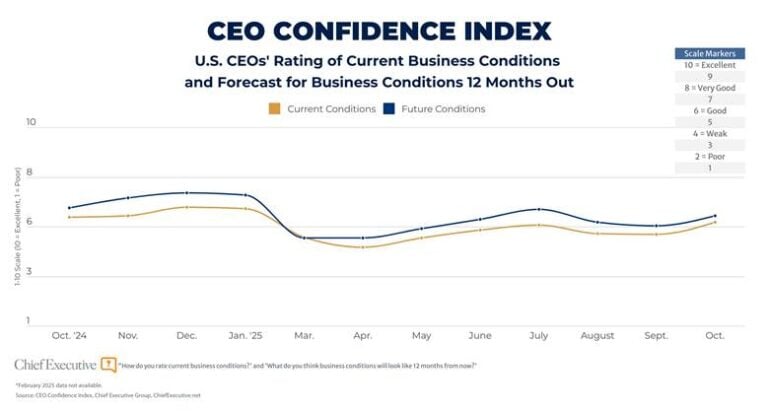

Running a business that generates revenue exceeding its combined costs (including capital), called an economic profit, is the essence of every executive’s, manager’s and business owner’s role, regardless of its ownership structure or size. The Economic Margin (EM) metric we use here to reveal an S&P 500 company’s wealth creation ability can also be used to measure that of a small or mid-size privately held company.
Based on the EM formula (operating cash flow less a risk-adjusted cost of capital, as a percent of invested capital), to make your business worth more, you can: improve operating cash flow, reduce both risk and the capital your business requires, and prudently manage your overall capital investment. To be more specific, here are a few things you can do to increase your business’s value, starting now:
Boost operating cash flow. You probably already manage receivables, payables and expenses well, have streamlined operations and use technology to cut costs. What else can you do? Revenue growth can drive operating cash flow dramatically, because fixed costs are already covered, and the newfound revenue will contribute proportionally more to profit (and operating cash flow). So grow revenue. Here are two major ways to do that. One is to get customers to like your business better, so they buy from you next time, instead of saying, “I’m moving on,” or worse, badmouthing your business. The second way is to strengthen your value proposition.
Creating zealous customers begins with having them come to believe that your business thinks they’re important and does things that empower or enable them. Also, the company “sings in harmony” to them, rather than the dissonance of: Sales: “Buy our products!” Engineering: “We’ll design them to only last three years.” Operations: “No replacement parts after that.” Yes, real companies do that.
There are a host of ways to beef up a value proposition: a big one is product or service design. This can be achieved by creating products that remove hassles, such as Oxo hand tools, or that provide needed features, such as L.L. Bean’s Wind Challenger jackets. You can also work to deliver peace of mind by providing a longer, or lifetime, guarantee or refining the design of your customer experience. Companies like Amazon and Zappos excel at that by hiring people customers can count on and training them to provide a great customer experience.
Manage your business design. Specifically how your company makes money on a sustained basis makes a major difference. It might seem that your job as CEO is to run the business you have, even if it’s low profit and/or low growth. But from the perspective of your company’s owners, your job is to create a more valuable business. How? Try new things on a small scale. Once something shows promise, let it grow. Examples of how business design factors into wealth creation can be found in the results of each of the three wealth creators from this year’s list, and one of the wealth destroyers, Archer Daniels Midland, profiled in the sidebar on the next page. Milliken, a privately held former textile maker in South Carolina that remade itself into a thriving provider of high-tech materials is another great example (see John Bussey’s WSJ column, Jan. 13, 2012).
Make wise choices. Sage decisions about the best initiatives to tackle can profoundly influence wealth creation. These initiatives include optimizing prices, making a powerful brand promise integral to your value proposition and many others. For more on making value-informed decisions, see the section on The Fortune Finder in “Leading Your Business to Maximum Results” (Chief Executive, Jan./Feb. 2008).
Management risk. The loss of a dominant customer, a privacy breach, product recall, technology failure, natural disaster, capital crisis or major lawsuit can dramatically reduce what your business is worth. A considered, comprehensive risk-management plan could save your business.
Again this year we’ve profiled companies in the top and bottom ranks that we haven’t written about previously, to provide a fresh set of management insights. The write-ups reflect company events and performance up until June 30, 2012.
Willard D. Oberton
Rank: 3
Fastenal distributes fasteners and other maintenance, repair and operations (MRO) items, primarily in the U.S. Its wealth-creation ability largely stems from a solid business design. Fasteners, its core offering, are essential to customers’ ability to keep production going—so they’re very costly to be without. And fastener cost is inconsequential to its customers, so Fastenal can price them so as to earn decent margins.
The company’s competitive advantages include store siting, an exceptionally broad and locally available inventory and an internal (and economical) logistics capability that gets needed parts to its stores daily by 8 a.m. Fastenal locates its stores in sparsely populated areas that will only likely support one store of its type. But it’s likely that the local store has what customers need, even if they’re in the boondocks.
Business design aside, though, it seems that CEO Willard D. Oberton still has work to do on employee satisfaction: a recent Glassdoor.com update showed that 56 percent were dissatisfied or worse. An aligned workforce could take Fastenal even further.
Pete Miller
Rank: 9
NOV is an equipment supplier to the oil and gas drilling industry.
Demand drivers have been the rise of oil prices over the ’09-’12 period and the increasing need to drill for oil offshore in more complex, deeper wells. The additional offshore wells, and the upgrades needed to existing offshore rigs, fuel demand for what NOV offers.
Skilled at acquiring companies, NOV has made itself the only source of rig equipment for many of the largest offshore drillers. It has acquired complementary players without overpaying, and has effectively integrated the acquisitions into a full-range offering. As a result, NOV now occupies the low-cost position as the largest rig-equipment company. In short, it is well-positioned to benefit from increased demand—by design.
Keith D. Nosbusch
Rank: 13
Rockwell provides process-control equipment for production lines.
Its master stroke was integrating its controls into a single architecture, reducing customers’ costs and hassle, and—significantly—enabling it to serve a wider variety of industries, such as food and beverage, and refining.
It has also geographically diversified in recent years, reducing its dependence on the U.S. manufacturing sector.
Vikram Pandit
Rank: 335
Along with other megabanks, Citigroup failed to manage the risk associated with its exposure to CDOs and home mortgages. It’s still taking hits from mortgage loans gone south. And like other such banks, the uncertainty about the full extent of its exposure is unclear (litigation risk, etc.).
But there’s another dimension to Citigroup’s troubles: its worldwide presence gives it higher exposure than most banks to the global economy and its trouble spots. For example, manufacturing weakness in China can adversely affect many emerging-market economies.
In a way, running Citigroup is like running a conglomerate: something will almost always be causing trouble. The expectation (or hope) is that the other areas can cover the problem.
Vic Pandit, Citigroup’s CEO since 2007, has made some progress in fixing things, but being gargantuan brings risk—and a discount.
Patricia Woertz
Rank: 346
ADM processes agricultural output such as oilseeds, wheat and corn into products used to make food and chemicals.
The basic problem facing ADM CEO Patricia Woertz is a challenged core-business design. It has little power over the prices it can charge its customers (large food manufacturers) or the cost of the agricultural commodities it buys and then processes. As a result, profits can be squeezed by either event—or both at once.
But investors put their capital into ADM expecting a remunerative future. What’s a CEO to do? Woertz decided she couldn’t just run ADM’s inherently challenged business in the best way she could: she chose to focus on opportunities. So far, so good.
One opening she pursued was making ethanol from corn. As it turned out, others also saw that opportunity, and there is now overcapacity in ethanol production, cutting the expected returns from ADM’s investment.
In everything, timing and luck have their say.
Aubrey McClendon
Rank: 359
Chesapeake Energy explores for and produces natural gas and oil in the U.S. Due to the oversupply of natural gas, some of which is due to Chesapeake’s push to expand production over the past several years, its returns are well below its cost of capital.
The firm ranked as the worst wealth creator based on CEO Aubrey McClendon’s aggressive, arguably reckless, management style. He has played fast and loose with economic-value creation, overpaying for assets and leases and growing too fast—outspending available cash flow and taking on too much debt. Essentially, he is betting that the company’s history of saving itself through creative financing will continue to get them through coming crises.
At Chesapeake, we’ve also seen rich CEO compensation, sketchy disclosure of same, resistance to pay for performance (until recently) and perceived conflicts of interest. The company has been given a “poor” governance rating by Morningstar. It has a very well compensated board ($400K each per year) that was, until this spring, seemingly asleep.
Full 2012 Wealth Creators Index List
Who is Generating Real Economic Value
How Wealth Creation Metrics Can Help Every Business Become More Valuable
Ranking CEO Wealth Creation



0

1:00 - 5:00 pm
Over 70% of Executives Surveyed Agree: Many Strategic Planning Efforts Lack Systematic Approach Tips for Enhancing Your Strategic Planning Process
Executives expressed frustration with their current strategic planning process. Issues include:
Steve Rutan and Denise Harrison have put together an afternoon workshop that will provide the tools you need to address these concerns. They have worked with hundreds of executives to develop a systematic approach that will enable your team to make better decisions during strategic planning. Steve and Denise will walk you through exercises for prioritizing your lists and steps that will reset and reinvigorate your process. This will be a hands-on workshop that will enable you to think about your business as you use the tools that are being presented. If you are ready for a Strategic Planning tune-up, select this workshop in your registration form. The additional fee of $695 will be added to your total.

2:00 - 5:00 pm
Female leaders face the same issues all leaders do, but they often face additional challenges too. In this peer session, we will facilitate a discussion of best practices and how to overcome common barriers to help women leaders be more effective within and outside their organizations.
Limited space available.

10:30 - 5:00 pm
General’s Retreat at Hermitage Golf Course
Sponsored by UBS
General’s Retreat, built in 1986 with architect Gary Roger Baird, has been voted the “Best Golf Course in Nashville” and is a “must play” when visiting the Nashville, Tennessee area. With the beautiful setting along the Cumberland River, golfers of all capabilities will thoroughly enjoy the golf, scenery and hospitality.
The golf outing fee includes transportation to and from the hotel, greens/cart fees, use of practice facilities, and boxed lunch. The bus will leave the hotel at 10:30 am for a noon shotgun start and return to the hotel after the cocktail reception following the completion of the round.